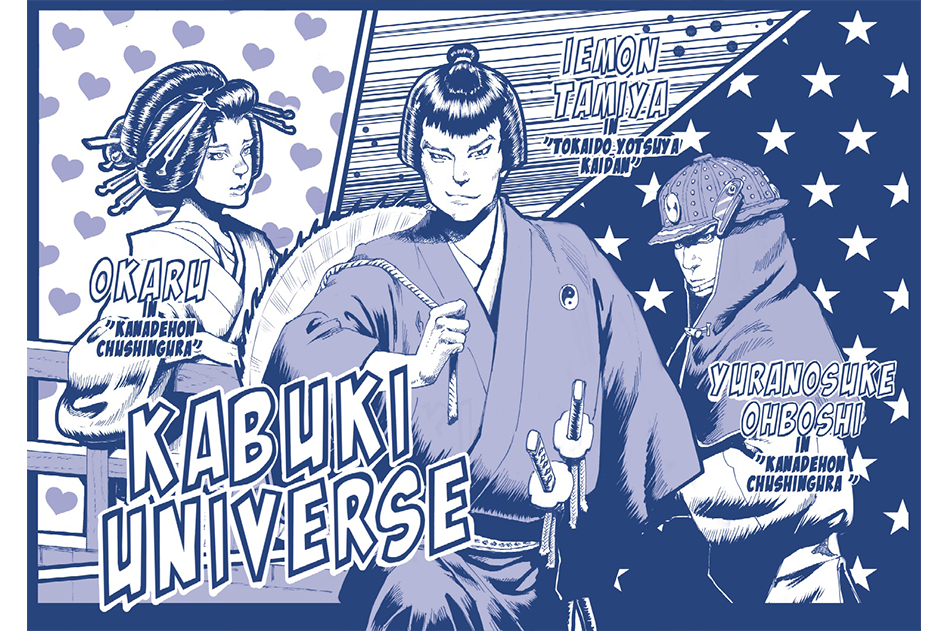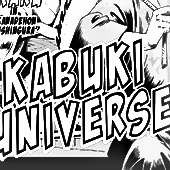


Thoughts on entertainment KabukiNo.3 -Part 1 of 2
What “world” crossovers accomplish

Often, people watching Kabuki for the first time are surprised that it’s a story they kind of know, except it’s not what they thought!
One example is Kanadehon chushingura (The Treasury of Loyal Retainers). People think, ‘Oh, it’s that Forty-Seven Ronin story.’ Then, unfamiliar characters appear—‘Who’s this Enya Hangan!?’ ‘Ko no Morono?’(like the comedian Morita, of Saraba Seishun no Hikari)—and they get confused. That’s not unusual.
The Chushingura story is a fictionalized version of the Ako incident that actually took place in the Genroku era during the Edo period, the early 1700s. Asano Takumi no Kami, the feudal lord of the Ako Domain, was treated disdainfully (though this is actually disputed) by Kira Kozuke no suke, holding the rank of kōke hatamoto. In rage, Asano attacked Kira in the Matsu no Ōrōka in the Edo Castle. Asano was ordered to commit hara-kiri for his excess. Kira escaped punishment. At the end of the following year, Oishi Kuranosuke and other warriors who had belonged to the Ako Domain raided the Kira residence and succeeded in avenging their lord. It’s that story.
Except that all the characters have different names.
It’s “Enya Hangan,” not Asano Takumi no Kami. It’s “Ko no Morono,” not Kira Kozuke no suke.
How about Oishi Kuranosuke? He is “Oboshi Yuranosuke.”
Is it, kind of, a parody? Even more confusing.
Actually, Enya Takasada, “Enya Hangan” being his titled name, and “Ko no Morono” are both warriors from the Nanboku-cho period in the 1300s.
When the playwrights (co-writers Takeda Izumo II, Miyoshi Shoraku, and Namiki Senryu) fictionalized the Ako incident, they borrowed the characters and the setting from Taiheiki, a work of historical fiction containing military tales that had been written centuries earlier.
Why go through all that trouble?
At the time, the Tokugawa shogunate, the government in power, had prohibited fictionalizing contemporary incidents, especially political incidents involving the warrior class. That’s why they needed the pretense that this is a story of the Nanboku-cho period, not something recent.
It must have been obvious, but the pretense was vital. Even before Kanadehon chushingura, works borrowing the setting of the Taiheiki to tell the Ako incident story had existed.
There’s another reason, which is much too simple:
‘Because that’s how Kabuki scripts were to be made, by borrowing settings.’
Taiheiki wasn’t the only setting used. Military tales Heike monogatari, Gikeiki, and Taikoki; legendary characters including the Raiko Shitenno and the Soga brothers; Noh titles Sumidagawa and Dojoji. Incidents and events, background information and locations, character names, human relationships, and more were extracted from these and many existing works and existing performing arts are used as settings to create stories.
In Kabuki, each of these settings is called sekai, a “world.”
In other words, Kanadehon chushingura makes use of the sekai of Taiheiki.
Text: Kowloon Joe
Born in Tokyo, 1976. Writer and editor. Writes mostly about pop culture and traditional performing art. Has edited countless publications. Pens the series “Wakaki geinoshatachi” in the magazine Bungakukai (published by Bungeishinju). Published works include Memorīsutikku: Poppukaruchā to shakai wo tsunagu yarikata (Memory stick: How to connect pop culture and society) from DU Books.
Illustration: Kan Takahama
Born in Amakusa, Kumamoto Prefecture. Graduated from the University of Tsukuba School of Art and Design. Published works include Mariko Parade co-authored with Frédéric Boilet (Ohta Publishing Company), Yellowbacks (Yugaku Shorin), Awabi (Yugaku Shorin), Nagi-Watari and Other Stories (Kawade Shobo Shinsha), 2 Espressos (Ohta Publishing Company), Yotsuya-ku Hanazonocho (Takeshobo), Sad Girl (Leed Publishing), and Cho-no-Michiyuki (Leed Publishing). Received a best of short stories award for Yellowbacks from The Comics Journal in 2004. Received an Excellence Award in the Manga Division for Nyx’s Lantern at the 21st Japan Media Arts Festival in 2018. Highly regarded overseas.
